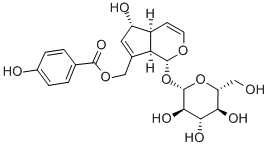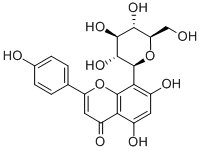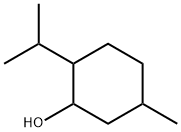Agnuside
Synonym(s):(1S,4aR,5S,7aS)-1,4a,5,7a-Tetrahydro-5-hydroxy-7-[[(4-hydroxybenzoyl)oxy]methyl]cyclopenta[c]pyran-1-yl β-D -glucopyranoside;Buddlejoside A
- CAS NO.:11027-63-7
- Empirical Formula: C22H26O11
- Molecular Weight: 466.44
- MDL number: MFCD21333314
- SAFETY DATA SHEET (SDS)
- Update Date: 2024-11-19 23:02:33

What is Agnuside?
Chemical properties
Yellow Oil
The Uses of Agnuside
Agnuside is an known iridoid glycoside found in Vitex herbs or plants. Agnuside have been used in various applications including in the treatment of premenstrual syndrome and regulation of menopause s ymptoms. This is mainly due to the fact that Agnuside exhibits estrogen-like activities as it interacts with estrogen receptors (ER-alpha) and estrogen receptor-regulated pregesterone receptors. Recen t studies have also evaluated Agnuside for the probable mechanism of anti-arthritic activity, which suggested the possible development of Agnuside as a therapeutic agent in the treatment of arthritis by the modulation of the host immune response.
Definition
ChEBI: Agnuside is a benzoate ester resulting from the formal condensation of the carboxy group of 4-hydroxybenzoic acid with the primary hydroxy group of aucubin. It is an iridoid glycoside found in several Vitex plants including Vitex agnus-castus. It has a role as a plant metabolite, an anti-inflammatory agent, a pro-angiogenic agent and a cyclooxygenase 2 inhibitor. It is a terpene glycoside, an iridoid monoterpenoid, a benzoate ester, a member of phenols, a beta-D-glucoside, a cyclopentapyran and a monosaccharide derivative. It is functionally related to an aucubin.
Benefits
Agnuside is one of the most significant active ingredients in chasteberry and is described chemically as an ester of p-hydroxybenzoic acid and aucubin. Agnuside’s greatest areas of benefit involve female reproductive cycles, which researchers believe is due to its effect on the pituitary gland. One study has also shown that extracts of chasteberry fruit bind to the opiate receptors in the brain, which would explain its use in relieving discomfort.
Properties of Agnuside
| Melting point: | 146℃ |
| Boiling point: | 785.5±60.0 °C(Predicted) |
| Density | 1.59±0.1 g/cm3(Predicted) |
| storage temp. | -20°C |
| solubility | DMSO, Methanol |
| form | neat |
| pka | 8.14±0.15(Predicted) |
| form | Solid |
| color | Yellow |
| optical activity | [α]/D -98.0±5°, c = 0.1 in ethanol |
| BRN | 4925795 |
Safety information for Agnuside
| Signal word | Warning |
| Pictogram(s) |
 Exclamation Mark Irritant GHS07 |
| GHS Hazard Statements |
H302:Acute toxicity,oral |
Computed Descriptors for Agnuside
| InChIKey | GLACGTLACKLUJX-QNAXTHAFSA-N |
| SMILES | [C@]12([H])C(COC(=O)C3=CC=C(O)C=C3)=C[C@H](O)[C@@]1([H])C=CO[C@@H]2O[C@H]1[C@H](O)[C@H]([C@H](O)[C@@H](CO)O1)O |&1:0,15,17,22,24,25,27,28,30,r| |
New Products
4-AMINO-TETRAHYDRO-PYRAN-4-CARBOXYLIC ACID HCL 4-(Dimethylamino)tetrahydro-2H-pyran-4-carbonitrile 4-Aminotetrahydropyran-4-carbonitrile Hydrochloride (R)-3-Aminobutanenitrile Hydrochloride 3-((Dimethylamino)methyl)-5-methylhexan-2-one oxalate 1,4-Dioxa-8-azaspiro[4.5]decane 5-Bromo-2-nitropyridine Nimesulide BP Aceclofenac IP/BP/EP Diclofenac Sodium IP/BP/EP/USP Mefenamic Acid IP/BP/EP/USP Ornidazole IP Diclofenac Potassium THOMAIND PAPER PH 2.0 TO 4.5 1 BOX BUFFER CAPSULE PH 9.2 - 10 CAP SODIUM CHLORIDE 0.1N CVS ALLOXAN MONOHYDRATE 98% PLATINUM 0.5% ON 3 MM ALUMINA PELLETS (TYPE 73) LITHIUM AAS SOLUTION 2-Bromo-1-(bromomethyl)-3-chloro-5-nitrobenzene 2-Bromo-3-nitroaniline N-(3-Hydroxypropyl)-N-methylacetamide 3-Bromo-6-chloropyridazine 4-ethyl-3-nitrobenzoic acidRelated products of tetrahydrofuran








You may like
-
 Agnuside CAS 11027-63-7View Details
Agnuside CAS 11027-63-7View Details
11027-63-7 -
 Agnuside CAS 11027-63-7View Details
Agnuside CAS 11027-63-7View Details
11027-63-7 -
 Agnuside CAS 11027-63-7View Details
Agnuside CAS 11027-63-7View Details
11027-63-7 -
 1823368-42-8 98%View Details
1823368-42-8 98%View Details
1823368-42-8 -
 2-(3-(tert-butyl)phenoxy)-2-methylpropanoic acid 1307449-08-6 98%View Details
2-(3-(tert-butyl)phenoxy)-2-methylpropanoic acid 1307449-08-6 98%View Details
1307449-08-6 -
 Ethyl 3-(furan-2-yl)-3-hydroxypropanoate 25408-95-1 98%View Details
Ethyl 3-(furan-2-yl)-3-hydroxypropanoate 25408-95-1 98%View Details
25408-95-1 -
 2-Chloro-5-fluoro-1-methoxy-3-methylbenzene 98%View Details
2-Chloro-5-fluoro-1-methoxy-3-methylbenzene 98%View Details
1805639-70-6 -
 Lithium ClavulanateView Details
Lithium ClavulanateView Details
61177-44-4